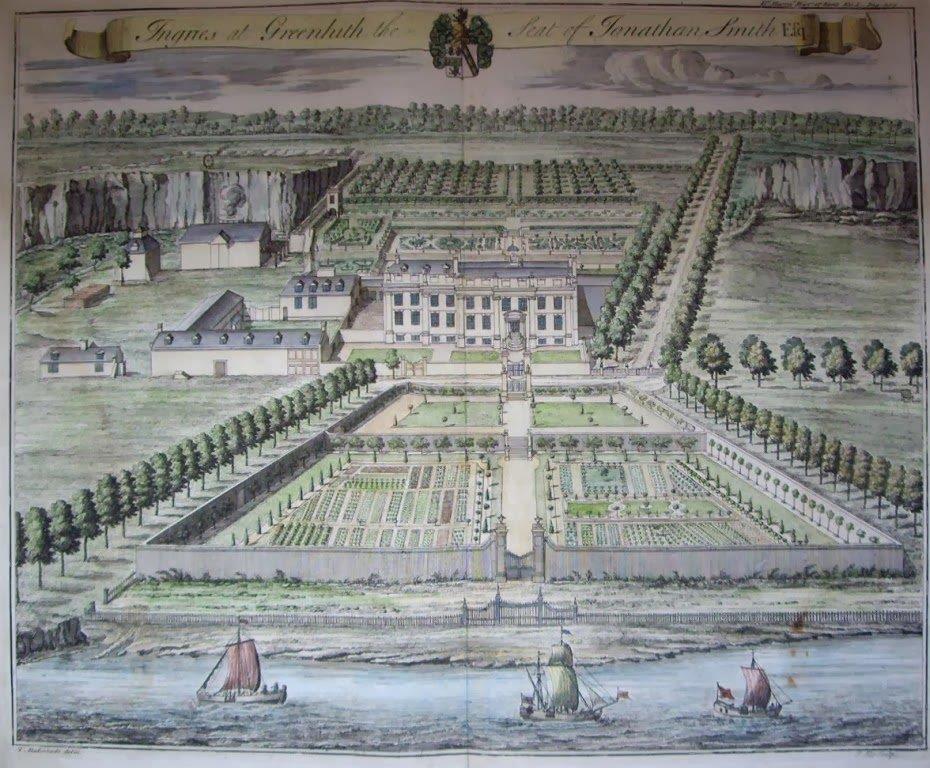Learning from defined settlements:
Historic & contemporary examples: Ingress Park & Bluewater
The original Ingress Park, with the landscape gardens laid out down to the water of the Thames in the foreground.
A number of other examples both contemporary and historic provide further precedents of the use of strong geometry in the layout of settlements within the riverside area.
Ingress Park is a local historic example of a defined settlement. An early engraving of the home of Jonathan Smith (above), shows a structured landscape of long tree lined avenues, orchards and walled gardens with a backdrop of chalk cliff to the ‘high ground’. This defined orthogonal form within the wild marshland setting, offers an intriguing precedent for future developments.
The Ingress Estate was a seat (manor) in the hamlet of Greenhithe. In 1363 the manor was endowed upon the Prioress and Abbey of the Dominican Sisters in Dartford by Edward III (1307–1377) until the Dissolution of the Monasteries under King Henry VIII of England. The current Tudor-gothic-style mansion, Ingress Abbey, was constructed in 1833.
Bluewater is an example of a contemporary defined settlement; defined and contained by water and the surrounding chalk escarpments.



